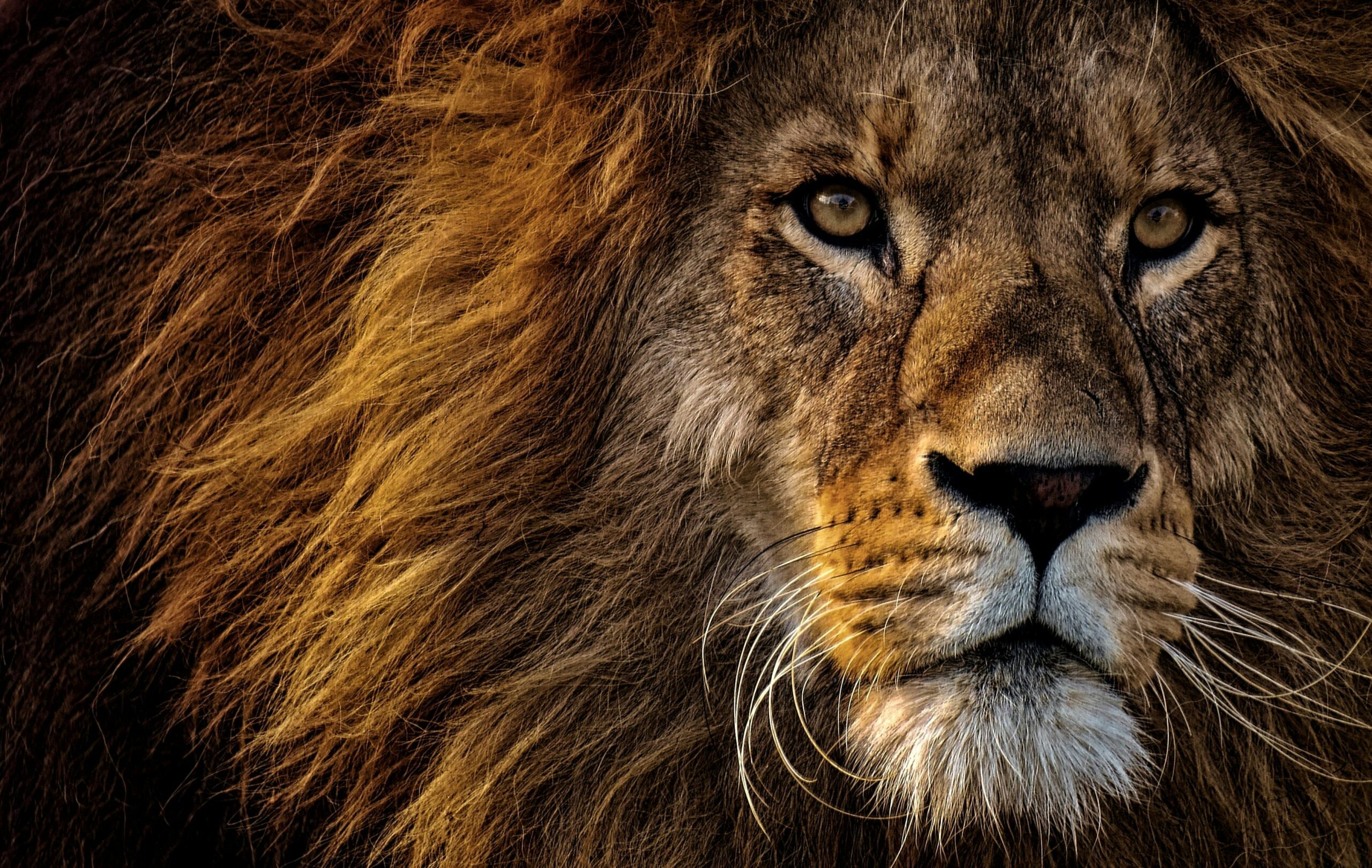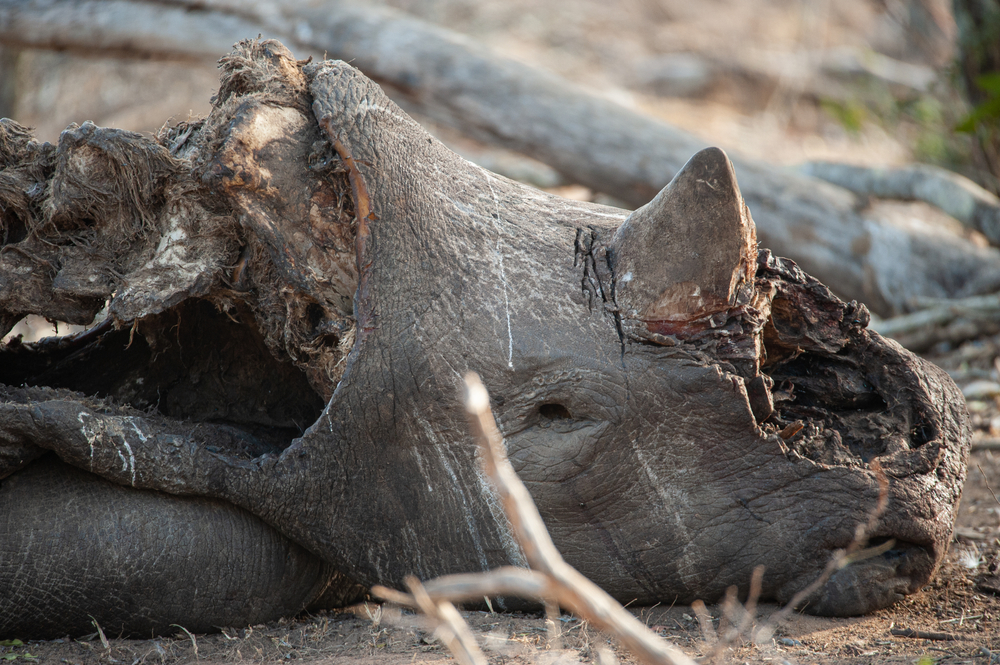Animals
Three ‘Rhino Poachers’ Eaten By Lions After Breaking In To South African Game Reserve

Poaching has long plagued Africa’s wildlife, threatening iconic species like rhinos, elephants, and more. Despite rigorous efforts from game reserves and conservationists, the illegal trade in animal parts continues to endanger biodiversity and ecosystems. But sometimes, nature takes justice into its own hands.
In an extraordinary incident at South Africa’s Sibuya Game Reserve, a group of poachers became prey themselves. Their attempt to hunt rhinos for their valuable horns was violently interrupted by a pride of lions, leaving behind only fragments of their presence. This story, both tragic and thought-provoking, highlights the ongoing battle against poaching and the resilience of wildlife in the face of human greed.

The Fatal Mistake of Poachers
Under the cover of darkness, three poachers entered South Africa’s Sibuya Game Reserve with one purpose: to harvest rhino horns. These horns, prized in parts of Asia for their supposed medicinal benefits, fetch exorbitant prices on the black market. However, the myth surrounding their value holds no scientific merit—rhino horns are made of keratin, the same substance found in human fingernails and hair. Despite this fact, the demand persists, driving poachers to risk their lives to obtain them. For these three individuals, their mission took a fatal turn when they encountered a pride of lions, animals whose ferocity matches the fragility of the rhinos they sought to exploit.
The poachers became prey themselves, with the lions leaving only fragments of their remains behind—shoes, tools, and scattered bones that told the tale of their ill-fated endeavor. This brutal irony serves as a stark reminder of nature’s raw power and its ability to resist human interference. While poachers often see wildlife as commodities to exploit, this incident forced a sobering reality: the environment they aimed to exploit can fight back in unexpected and deadly ways. Rangers discovered the grisly scene days later, tranquilizing some of the lions to investigate and confirming the number of poachers through the recovered equipment.
This shocking story reverberated around the globe, sparking debate and mixed emotions. Some viewed it as poetic justice for the poachers’ intentions, while others saw it as a reminder of the desperate circumstances that lead individuals to engage in such illegal activities. Beyond the sensational headlines, however, this event highlights the ongoing challenges of protecting Africa’s vulnerable wildlife. It underscores the critical need for more robust conservation efforts to address the demand driving poaching and the socioeconomic conditions that enable it.
The Harsh Reality of Rhino Poaching
For decades, rhino poaching has been one of the greatest threats to Africa’s biodiversity, pushing these majestic animals toward the brink of extinction. Poaching is often driven by well-funded and organized crime syndicates, whose operations span continents, from Africa to Asia. These networks perpetuate myths about rhino horn’s medicinal properties, enticing wealthy buyers with false promises of health benefits or luxury status symbols. As a result, poaching has become a lucrative yet devastating industry, one that devastates wildlife populations and undermines conservation efforts.
The impact on rhino populations has been catastrophic. Black rhinos and white rhinos, once abundant in Africa, now face dwindling numbers. In some regions, subspecies like the northern white rhino are already functionally extinct, with only a handful of individuals surviving under constant human protection. This decline is not only a loss of an iconic species but also a blow to the ecosystems that rely on these animals to maintain balance. Without rhinos, entire habitats can shift, affecting countless other species and the communities that depend on those ecosystems for their livelihoods.
Despite the grim reality, efforts to combat poaching have seen some success. Increased patrolling, advanced technology like drones, and community engagement programs are making it harder for poachers to operate undetected. However, these measures are not enough on their own. Addressing the demand for rhino horn in Asia is crucial to disrupting the supply chain. This requires sustained education campaigns to dismantle the myths surrounding the horn’s supposed benefits, shifting cultural perceptions, and reducing consumer demand. Until these changes occur, poaching will continue to pose an existential threat to Africa’s rhino populations.

A Glimmer of Hope: Conservation Milestones
While the battle against poaching is far from over, recent milestones in conservation offer a glimmer of hope. In 2020, Kenya achieved an unprecedented victory in its fight against poaching: for the first time in over two decades, not a single rhino was killed. This achievement, celebrated by the Kenya Wildlife Service (KWS), is the result of tireless efforts by conservationists, government officials, and local communities. Enhanced patrols, stricter enforcement measures, and greater public awareness have all contributed to this success.
The global COVID-19 pandemic, while devastating in many ways, also played a role in curbing poaching during this time. Travel restrictions and reduced tourism made it harder for poachers to operate without detection. However, experts caution against viewing this as a permanent solution. The conditions that allowed for a decline in poaching are temporary, and without sustained efforts, the problem could resurface as the world returns to normalcy.
Kenya’s success is a reminder of what can be achieved through collaboration and commitment. Yet, conservationists warn that victories like this are only part of a larger battle. Across Africa, rhinos remain at risk due to habitat loss, organized crime, and the persistent demand for their horns. To build on these successes, conservation efforts must continue to evolve, combining traditional enforcement with innovative solutions that address the root causes of poaching. By doing so, there is hope that these milestones can become the norm rather than the exception.
Empowering Communities to Combat Poaching
The fight against poaching cannot be won by law enforcement and conservationists alone. Communities living near wildlife reserves play a critical role in protecting endangered species, as they are often the first to witness suspicious activities or poaching attempts. However, these communities often face significant economic challenges, which can make poaching an attractive, albeit illegal, source of income.
Empowering local populations is a key strategy in the fight against wildlife crime. By providing alternative livelihoods, education, and economic incentives, conservation programs can reduce the appeal of poaching. Eco-tourism initiatives, for example, create jobs while fostering a sense of pride in preserving local wildlife. Community-led patrols and ranger programs also give residents a direct role in conservation, turning them into allies rather than adversaries.
Corruption remains one of the biggest obstacles to these efforts. Poaching syndicates often exploit weaknesses in law enforcement, bribing officials and undermining conservation initiatives. Addressing this issue requires a multi-faceted approach, combining anti-corruption measures with international cooperation to dismantle criminal networks. Only by addressing these systemic challenges can communities and conservationists work together effectively to protect Africa’s wildlife.
A Sobering Reminder of Nature’s Balance
The Sibuya Game Reserve incident is more than just a story of poachers meeting an unexpected fate. It serves as a stark reminder of the delicate balance between humanity and nature—a balance that is too often disrupted by greed and exploitation. While the lions’ actions may seem like poetic justice, the root of the issue remains unresolved. Poaching is a symptom of deeper societal and economic problems, from poverty to cultural misconceptions about wildlife.
This event also underscores the power of nature to resist human interference. Despite humanity’s advances, ecosystems remain intricate and unpredictable, capable of responding in ways that remind us of our place in the natural order. The incident challenges us to reflect on our actions and their consequences, not only for the animals we endanger but also for ourselves as stewards of this planet.
Protecting endangered species like rhinos requires a global effort, one that combines education, enforcement, and community engagement. By addressing the underlying drivers of poaching and fostering a greater respect for nature, we can begin to restore balance and ensure the survival of these magnificent creatures for generations to come.
A Wake-Up Call from the Wild
The story of the poachers in the Sibuya game reserve is a stark reminder of the balance nature seeks to maintain. While it may seem like an extraordinary twist of fate, this incident highlights the dangers and consequences of wildlife exploitation. It serves as a sobering message: those who harm the natural world ultimately face repercussions, whether from the law, the ecosystem, or, in this case, its apex predators.
However, we cannot rely on such dramatic events to protect endangered species like rhinos. Conservation requires ongoing commitment and collective action. From stronger anti-poaching laws to educational campaigns that dismantle harmful myths, every effort counts. Communities, governments, and individuals all have a role to play in safeguarding these majestic creatures. Protecting wildlife is about more than preserving biodiversity—it’s about ensuring a sustainable future for generations to come.
As the fight against poaching continues, stories like this should inspire us to reflect on the choices we make and the impact they have on the planet. Supporting conservation efforts, spreading awareness, and advocating for wildlife protection can help turn the tide. Nature has shown its strength; now it’s time for humanity to match it with compassion and responsibility.
Typos, corrections and/or news tips? Email us at Contact@TheMindUnleashed.com
